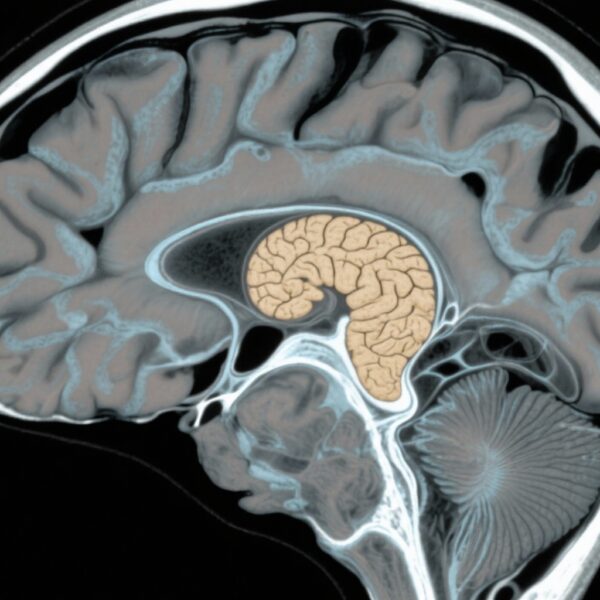Highlight
- Higher midlife exposure to nitrogen dioxide (NO2) and particulate matter (PM10) is linked to slower processing speed and poorer verbal memory across midlife to older age.
- Exposure to a range of air pollutants is associated with lower overall cognitive state scores at age 69, measured by the Addenbrooke’s Cognitive Examination III (ACE-III).
- Increased nitrogen oxides exposure correlates with smaller hippocampal volumes, while NO2 and PM10 exposure associate with enlarged ventricular volumes in older adults.
- These findings strengthen evidence that life course air pollution exposure detrimentally affects cognitive aging and brain structural integrity.
Background
As global populations age, cognitive decline and dementia represent major public health challenges with significant socioeconomic impact. Identifying modifiable environmental risk factors is critical for prevention. Ambient air pollution, particularly from traffic-related sources, has emerged as a plausible contributor to neurodegeneration and cognitive impairment. Prior studies have demonstrated associations between air pollution exposure and dementia risk, but most have examined only late-life exposures or cross-sectional cognitive outcomes. Comprehensive assessments spanning multiple points throughout life including objective brain imaging are limited. This study leverages the unique Medical Research Council National Survey of Health and Development (NSHD) 1946 British Birth Cohort with embedded neuroimaging to investigate long-term associations between air pollution exposure across adulthood and cognitive and structural brain outcomes in later life.
Study Design
This population-based cohort study utilized longitudinal data from NSHD participants born during a single week in March 1946. The sample included up to 2,148 participants for cognitive assessments across ages 43 to 69 years and 502 participants in the Insight 46 neuroimaging substudy at ages 69-71. Air pollution exposure metrics—nitrogen dioxide (NO2), nitrogen oxides (NOx), particulate matter under 10 μm (PM10), fine particulate matter under 2.5 μm (PM2.5), coarse particulate matter (PMcoarse), and particulate matter absorbance (PM2.5abs)—were assigned for midlife intervals (ages 45-64) with adjustments for early-life pollutants (black smoke, sulphur dioxide). Cognitive outcomes assessed included verbal memory (15-item recall), processing speed (visual search task), and global cognitive state (Addenbrooke’s Cognitive Examination III). Brain MRI measured total brain, ventricular, hippocampal, and white matter hyperintensity volumes. Sociodemographic confounders, including smoking and neighborhood deprivation, were controlled using generalized linear mixed models.
Key Findings
Among 1,534 participants assessed for verbal memory and processing speed from ages 43 to 69, increased exposure to NO2 and PM10 was significantly associated with slower processing speed (NO2 β -8.121 per interquartile range [IQR] increase, 95% CI -10.338 to -5.905; PM10 β -4.518, 95% CI -6.680 to -2.357), indicative of cognitive slowing over midlife. Verbal memory showed weaker but consistent negative associations.
At age 69, higher exposure to all air pollutants tested correlated with lower ACE-III cognitive state scores (for NO2, β -0.589, 95% CI -0.921 to -0.257), substantiating a global cognitive disadvantage related to pollution burden.
Within the neuroimaging substudy, 453 participants analyzed showed that higher NOx exposure was linked to smaller hippocampal volume (β -0.088, 95% CI -0.172 to -0.004), a key region implicated in memory and Alzheimer’s disease. Further, NO2 and PM10 exposures were associated with increased ventricular volume (NO2 β 2.259, 95% CI 0.457 to 4.061; PM10 β 1.841, 95% CI 0.013 to 3.669), a marker of cerebral atrophy. White matter hyperintensity volumes did not show consistent associations.
Expert Commentary
This study leverages a uniquely detailed life course dataset with robust air pollution modeling, repeated cognitive assessments, and brain imaging to illuminate how environmental exposures influence brain health decades later. The incorporation of midlife exposure windows, when brain aging accelerates, addresses a critical gap in understanding exposure timing. Associations with both cognitive domains and structural brain changes provide biological plausibility that air pollution contributes to neurodegenerative processes. While confounding factors were considered, residual confounding cannot be excluded. Moreover, the cohort is ethnically homogeneous and from a historical birth cohort, which may limit generalizability to contemporary diverse populations. Nonetheless, these findings align with mechanistic data showing neuroinflammation and oxidative stress induced by pollutants affecting hippocampal integrity. Efforts to improve air quality could therefore represent a modifiable strategy to mitigate cognitive decline in aging populations.
Conclusion
The 1946 British Birth Cohort study demonstrates that greater exposure to nitrogen dioxide, nitrogen oxides, and particulate matter during midlife is associated with poorer cognitive performance, global cognitive impairment, and adverse brain structural changes including hippocampal atrophy and ventricular enlargement in later life. These findings reinforce the growing evidence of air pollution’s neurotoxic effects and highlight the importance of environmental interventions in dementia prevention strategies. Future studies should explore mechanisms in ethnically diverse populations and assess the impact of reducing exposures on cognitive trajectories.
Funding
This work was supported by the National Institute for Health and Care Research (NIHR), the Medical Research Council (MRC), Alzheimer’s Research UK, the Alzheimer’s Association, MRC Dementias Platform UK, and Brain Research UK.
References
Canning T, Arias-de la Torre J, Fisher HL, Gulliver J, Hansell AL, Hardy R, et al. Associations between life course exposure to ambient air pollution with cognition and later-life brain structure: a population-based study of the 1946 British Birth Cohort. Lancet Healthy Longev. 2025 Jul;6(7):100724. doi: 10.1016/j.lanhl.2025.100724. Epub 2025 Jul 17. PMID: 40684776.
Livingston G, Huntley J, Sommerlad A, et al. Dementia prevention, intervention, and care: 2020 report of the Lancet Commission. Lancet. 2020;396(10248):413-446.
Auffret M, Allain P, Joly P, et al. Impact of Air Pollution on Alzheimer’s Disease and Dementia. J Alzheimers Dis Rep. 2021;5(1):201-210.


